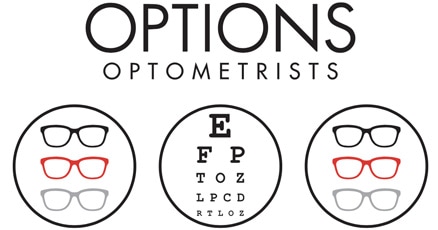Myopia, or short-sightedness, is a common vision condition that causes distant objects to look blurry. It occurs when the eye grows too long or the cornea is too curved, causing images to land in front of the retina.

In a normally shaped eye, light lands on the retina for clear vision. In a myopic eye, the increase in length creates blur. Because the focal point sits in front of the retina, the brain receives an unfocused image. The condition usually begins during childhood or adolescence and progresses until early adulthood. It is the most frequent cause of vision impairment for people under 40. Understanding what myopia is, why it develops, and how it can be controlled is essential for long-term eye health.
Signs and Symptoms of Myopia
Those with nearsightedness may experience:
- Blurry vision when looking at faraway objects
- Needing to squint to see clearly
- Headaches
- Eye strain
Children often don’t express difficulty seeing, but you might notice the following behaviours that suggest a vision problem:
- Squinting constantly
- Frequently blinking or rubbing eyes
- Seeming unaware of distant objects
- Holding books or screens very close to their face
Adults typically report blurry vision while driving, difficulty reading presentation screens at work or relying on squinting to do daily tasks. Some people with nearsightedness may only experience blurry vision at night or in low-light environments, even if they see well during the day. This specific condition is known as night myopia and can make nighttime driving particularly challenging.
What Causes Myopia?
Myopia is caused by a combination of biological and environmental factors. The condition is strongly hereditary. If one or both parents are myopic, the child’s risk increases significantly. You could also develop myopia due to your lifestyle. Long periods of close-up reading, computer work, and phone use encourage the eye to adapt to near-focused tasks. Poor lighting and excessive time spent inside also contribute to eye strain. Studies have shown that children who spend more time outdoors experience a slower onset of myopia.
Diagnosis and Tests
An optometrist can diagnose myopia with a standard eye test. Your eye care provider will evaluate how sharp your distance vision is by asking you to read letters on a chart. A retinoscope is then used to measure your refractive error. The optometrist might also use a phoropter to find a more precise prescription by asking the patient to compare different lens combinations. These tests allow optometrists to decide the prescription of any corrective lenses you may need.
Myopia Correction Treatments
Nearsightedness can be treated using corrective lenses such as glasses or contact lenses. If you have myopia, your prescription will be a negative number (e.g., -3.00). A higher number indicates stronger lenses. Prescription lenses will focus light directly onto the retina to clear up your distance vision. Adults may also use refractive surgery to reshape the cornea. However, these surgical treatments are only an option when myopia is no longer progressing.
What is Myopia Control?
While correction helps you see clearly, it doesn’t stop the underlying growth of the eye. Nearsightedness usually starts in early childhood and progressively worsens until adulthood. Myopia control refers to treatments and strategies specifically designed to slow its progression during childhood when the eye is still growing. It aims to reduce how quickly the eye elongates, because excessive axial elongation increases the risk of conditions such as glaucoma, retinal detachments and myopic macular degeneration later in life.
This is why myopia control treatments are recommended as soon as myopia is diagnosed in children. These treatments include myopia control lenses, ortho-k lenses, or atropine eye drops. Implementing a myopia control plan helps children and teenagers maintain more stable vision. Since their vision will deteriorate less between eye exams, their vision will remain clearer for school, sports and other daily activities.
Myopia is increasingly common in Australia. Although the condition itself simply causes distance blur. The long-term risks make early detection and management essential. If you or your child shows signs of myopia, contact your local Options Optometrist. Our team have several ways to help control and slow myopia progression in your child. We use a proactive approach to develop a personalised plan to correct, control and slow myopia progression.
